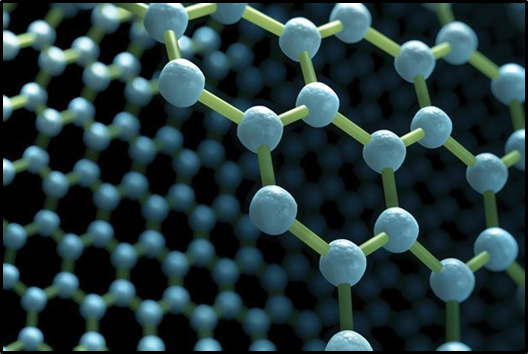Role of Nanotechnology in Construction
Nanotechnology has great potential to improve the construction industry. Nanotechnology can enhance traditional construction materials such as concrete, steel, glass, coatings, and wood. Reducing production and maintenance costs and achieving sustainable construction is possible through nanotechnology applications.
What is Nanotechnology?
Nano means dwarf in Greek and indicates to one-billionth. One nanometer is one billionth of one meter and is about as 1/80,000 of the diameter of a human hair. Nanotechnology exploits the manipulation of matter on the nanoscale. Nanoscale materials have fundamentally different properties than atoms, molecules and bulk materials. The size range of nanomaterials lies between 0.1-100 nm. At this scale, the behavior of the matter changes and quantum physics dominates the physical laws. The Behavior of the surface dominates the behavior of the bulk materials and unique structural, optical, magnetic and electronic properties are observed (Kargozar & Mozafari, 2018). For example, incorporating carbon nanotubes into plastics or metals lead to lighter construction materials.
Nanomaterials can be classified based on their dimension and composition. Thin films, layers, and surfaces can be classified as one dimensional; nanowires and nanotubes as two dimensional; nanoparticles, graphite sheets, and quantum dots as three-dimensional nanomaterials. Classification based on composition includes; single phase solids, multiphase solids and multiphase systems. Single phase solids are crystalline and amorphous particles, and layers, multiphase solids include matrix composites and coated particles, multiphase systems include aerosols, colloids, and ferrofluids.
There are two approaches to the production of nanomaterials; top down approach and bottom up approach. Top down approach refers to the size reduction of macroscale materials to the nanoscale sizes while the bottom up approach refers to the construction of nanomaterials from atomic or molecular components. The production process of nanomaterials can involve either approaches or a combination of two approaches. However, the top down approach is often preferred since it is a much simpler process (Kargozar & Mozafari, 2018).
Nanotechnology aims to manufacture these nanomaterials and engineer them to build enhanced systems for economical, sustainable and efficient applications. Most business areas have been influenced by developments in nanotechnology. These industries can be listed as; energy, electronics, food, agriculture, medical, cosmetics, and construction.

How Does Nanotechnology Affect Construction Business?
The construction industry holds an important part in the national economies throughout the world. Even though the progress has been slower than other sectors, nanotechnology shows great potential for the improvement of the construction business. Traditional construction materials such as concrete, glass, structural steel, timber, and coatings can be engineered to improve the industry and even aid sustainable construction. Amongst the myriad of nanomaterials, titanium dioxide (TiO2) and carbon nanotubes (CNTs) are the most promising materials in the construction business. Other nanomaterials that can be used in construction can be listed as silica, alumina, magnesium, calcium and clay nanoparticles. Nanomaterials such as semiconducting films, quantum dots, and biomolecules are not applicable to the construction industry since they are not available in bulk quantities. High surface area, functional density, high sensitivity, special surface effects, high strain resistance and catalytic effects of nanomaterials provide great potential to the improvement of construction materials. Nanoparticulate fillers enhance mechanical properties and yield impermeable materials. Enhanced properties of materials directly affect the selection of construction materials, erection methods, and on-site handling techniques. For example, lighter materials in construction reduce provide ease of erection; enhanced placement time of concrete can reduce the construction schedule; using materials that are safer, easier and faster to handle and install reduces the labour requirement in the industry.
Nanotechnology for Concrete
Concrete is one of the most important materials for the construction industry. It readily consists of nanoscale structures such as cement hydrates, aggregates, and additives. Properties of these nanoscale structures affect the macroscale properties of concrete strongly. The quality of the concrete can be improved by engineering the nanoscale features. Nanostructures are less resistant to shear, more flexible and highly ductile in comparison to traditional structures used in construction. For this reason, integrating nanofiber reinforcements or particles to the structure increases the strength and durability of concrete. For example, carbon nanotubes improve the crack resistance of concrete. Nanoparticles such as nano silica, nano clays, Nano Titanium Oxide (TiO2), Nano Iron (Fe2 O3), Nano alumina (Al2 O3), Copper Oxide (CuO), Zinc Peroxide (ZnO2) and (ZrO2) Zirconium dioxide are considered candidates for the improvement of concrete properties (Oke, Aigbavboa, & Semenya, 2017). Nano silica additives can improvedurability, segregation resistance, and self-compacting capability of concrete.
Applications of nanofibers or nanoparticles lead to high-performance (HPC), ultra-high-performance concrete (UHPC) self-levelling (SLC), self-healing and self-compacting concrete (SCC). Furthermore, some nanotechnology applications during cement production lead to the improvement of sustainable construction as well. The cement production process is responsible for a considerable amount of CO2 emission to the environment. Additives such as belite, calcium sulfo-aluminate, and calcium alumina-ferrite can reduce the CO2 emission of the production process.
Nanotechnology for Structural Steel
Along with concrete, structural steel plays an important role in the construction industry. Nanotechnology is extensively used for the improvement of strength and durability of structural steel. Nano modifications such as material grain size refinement can reduce the cracking in steel structure. The use of carbon nanotubes increases the tensile strength of structural steel up to 150 fold while reducing the weight of steel by six times compared to the conventional steel structures in construction (Teizer, Venugopal, Teizer, & Felkl, 2012). Using lighter steel structures in the construction industry reduces the labor and energy requirements considerably. One of the most important issues of structural steel is fatigue. Fatigue results in structural failures upon cyclic loading and shortens the life cycle of the steel. Using copper nanoparticles can overcome this problem by creating smooth and even surfaces that reduce the stress on the steel structure. Nanotechnology can also be used for improving the corrosion resistance of steel by engineering new generation stainless steel materials(Rao, Rajasekhar, Vijayalakshmi, & Vamshykrishna, 2015).
Nanotechnology for Coatings
Coatings are crucial for the protection of materials and can be further improved by using nanotechnology. Adding nanoparticles into coatings and paints provides better resistance to corrosion and wear; prevents condensation and mold formation; enhances chemical, optical, aesthetic and electrical properties. For example, nano-alumina and titania show four- to six- fold water resistance and two-fold strength. These coatings can also provide fire retardation and improve the safety of structures. Carbon nanotubes are used as nontoxic additives in coatings providing fire protection, better electrical and optical properties. Nano-TiO2 can be used in hard-surface coatings for wear and scratch resistance; for preventing pollutants to stick onto building exteriors (Teizer et al., 2012). Utilizing nano-silica particles in coatings also improve water resistance, scratch, and abrasion resistance without affecting the gloss, transparency, and flexibility of surfaces. It is also a more effective insulating material than the conventional insulators used in construction. Aerogel coatings provide acoustic insulation; hydrophobic properties; mould, corrosion, and ultraviolet light-induced degradation resistance.
Using nano-coatings in construction reduces the overall cost of construction, maintenance, and modifications. Furthermore, nanotechnology can improve the thermal insulation of construction materials which would reduce carbon emission and contribute to energy conservation.
Learn more about Nanotechnology in Paints
Nanotechnology for Glass Materials
Nanotechnology has a long-standing relationship with the glass industry. Improvements in nanotechnology have provided glasses with increased functionalities such as energy and solar control, fire safety, noise and reflection reduction, self-cleaning properties and resistance to scratching. For example, silica nanoparticles provide fire safety when sandwiched between two glass layers. Aerogels can be used in skylight glasses and exterior glazing (Teizer et al., 2012). TiO2 can be used as an anti-fogging agent or in self-cleaning glasses. Nanostructured coatings on windows can selectively reflect or transmit light in different wavelengths which enables different energy saving applications. Utilizing nanotechnology to improve glass materials used in the construction business provides energy saving by reducing heat loss and contributes to sustainable construction.
Nanotechnology for Timber
Forest products have gradually lost importance in the construction industry over the years due to their poor resistance properties in comparison to concrete and steel. However, nanotechnology can be utilized for the advancement of these bio-based materials. Carbon-based composites can provide strength and durability. Wood products are accessible for the construction industry; they are lightweight, easy to repair, and most importantly biodegradable.
Sustainable Construction and Nanotechnology
Click to check the Use of Graphene in Construction
Lately, sustainable technologies have gained importance across all industries. The construction business has also jumped the sustainability wagon in order to help our world to recover from the damages. Nanotechnology is the most promising approach to address the major sustainability problems in the construction industry. Raw materials consumption is one of the biggest problems of sustainability. Nanotechnology can decrease raw material consumption by increasing its durability and life span. Carbon emission is another sustainability problem in the construction industry since it contributes to the greenhouse effect. The carbon emission can be reduced by the addition of nanoparticles during material production as well as by improving the energy conservation properties of the buildings. Another approach is increasing the use of bio-based materials such as wood in the construction industry. Nanotechnology can overcome the drawbacks of these materials by providing strength, durability, and resistance. Bio-based materials are considered carbon-zero hence they have a neutral effect on carbon emissions. Such applications of nanotechnology can help the construction industry to achieve sustainability goals.
Why Nanotechnology is Important for Construction Business?
The potential application of nanotechnology in the construction business has the utmost importance to the innovative improvement of the sector. Utilizing nanotechnology provides the advantage of tailoring conventional construction materials to the rapidly changing requirements of our world. Nanotechnology improves the durability, strength, life span and resistance of construction materials while providing desired properties. Moreover, nanotechnology can reduce production, maintenance and retrofitting costs in the construction business. These improvements can transform the construction industry for the better, bring solutions to the most difficult problems in the industry and aid the urgent sustainability goals of our world. Overall, nanotechnology is a promising approach to the improvement of the construction business.
Read: Ultimate Guide to Graphene: Everything You Need to Know About Graphene
References
Kargozar, S., & Mozafari, M. (2018). Nanotechnology and Nanomedicine: Start small, think big. Materials Today: Proceedings, 5(7), 15492-15500.
Oke, A., Aigbavboa, C., & Semenya, K. (2017). Review of the Application of Nanotechnology for Sustainable Construction Materials. Paper presented at the Second International Conference on Mechanics, Materials and Structural Engineering (ICMMSE 2017).
Rao, N. V., Rajasekhar, M., Vijayalakshmi, K., & Vamshykrishna, M. (2015). The future of civil engineering with the influence and impact of nanotechnology on properties of materials. Procedia Materials Science, 10, 111-115.
Teizer, J., Venugopal, M., Teizer, W., & Felkl, J. (2012). Nanotechnology and its impact on construction: bridging the gap between researchers and industry professionals. Journal of Construction Engineering and management, 138(5), 594-604.
Recent Posts
-
Nanocomposites in Food Packaging
The utilization of nanocomposites in food packaging represents a significant advancement in the fiel …19th Apr 2024 -
What is the Difference Between 7075 and 6061 Aluminum Alloy?
When comparing 7075 aluminum alloy to 6061 aluminum alloy, it's essential to understand their disti …5th Apr 2024 -
Iron-Air Batteries: The Ultimate Guide
Iron-air batteries represent a significant breakthrough in energy storage technology, offering a sus …29th Mar 2024








